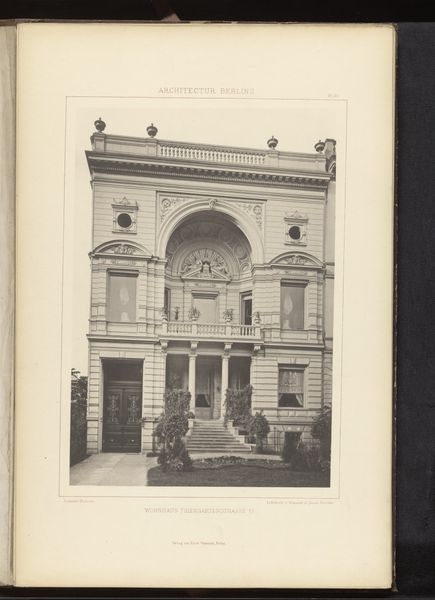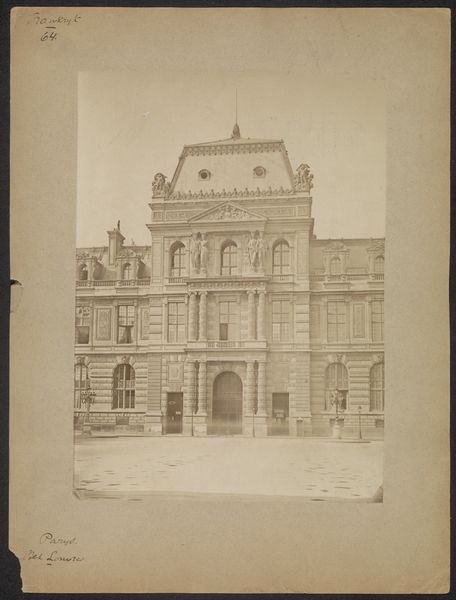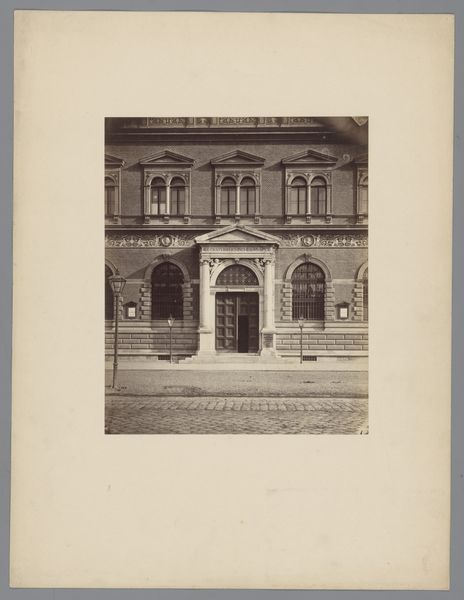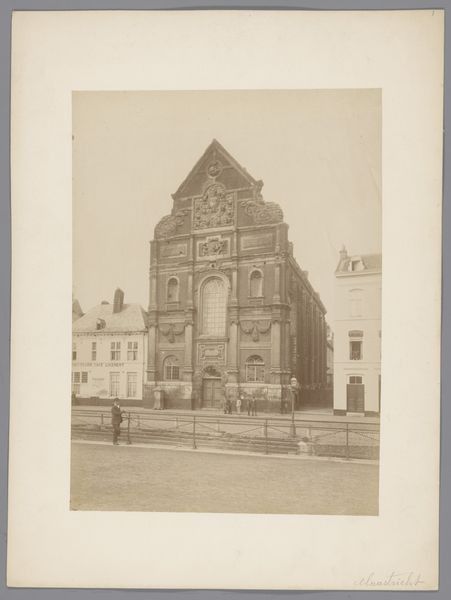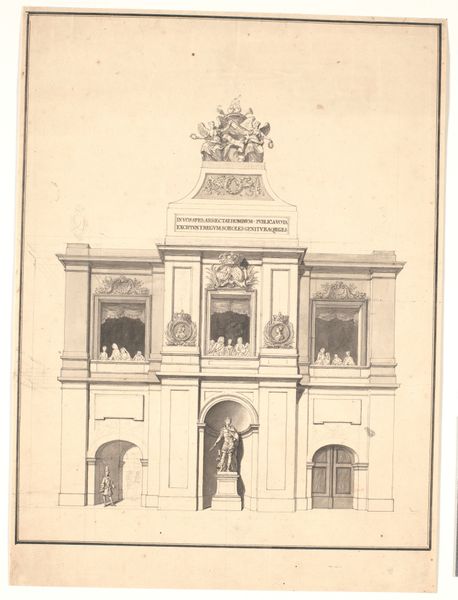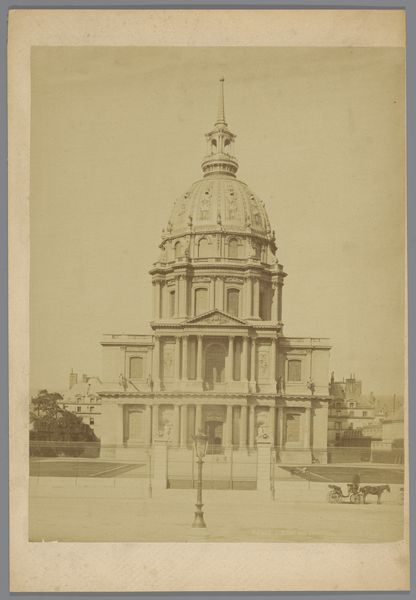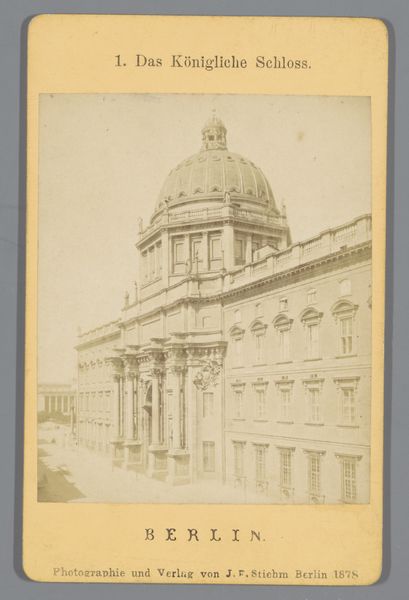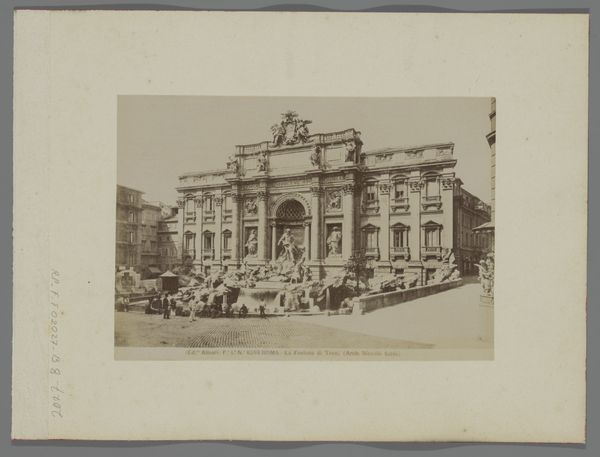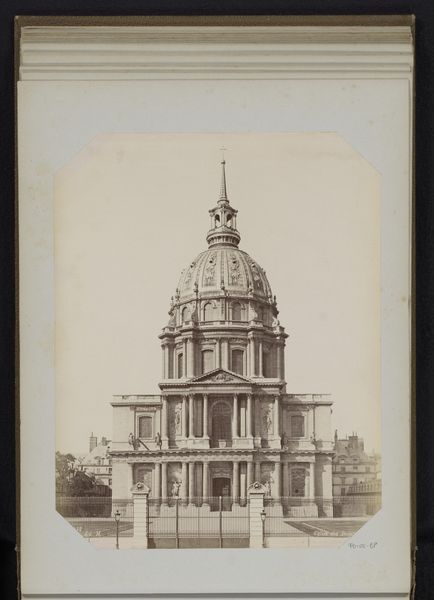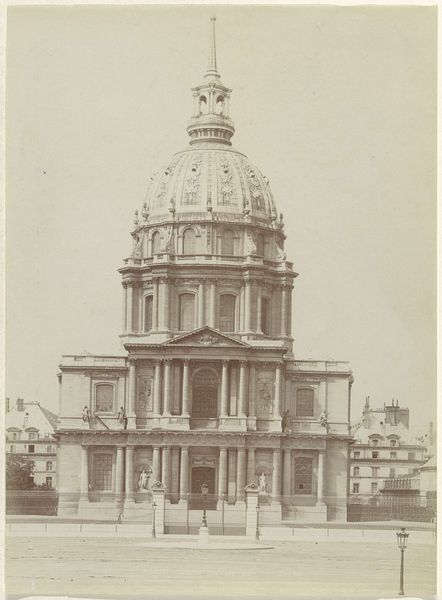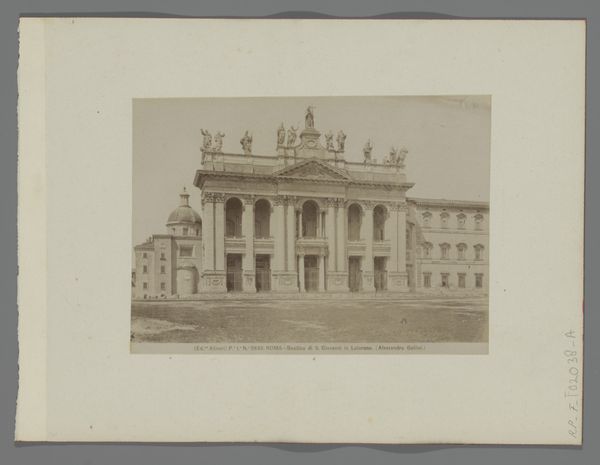
Dimensions: height 305 mm, width 244 mm
Copyright: Rijks Museum: Open Domain
Curator: Looking at this image, the immediate impression I get is one of solemn grandeur. The neoclassical architecture of this entrance just seems to exude authority. Editor: Indeed. We are viewing A. Wimmer's photographic rendering of "Gezicht op een ingang van de Hofburg aan Michaelerplatz in Wenen, Oostenrijk", dating from 1895. What I find intriguing is the blend of imposing monumentality and subtle everyday life captured within the same frame. Curator: Absolutely, you see how the eye is drawn upwards by the symmetry of the structure to the dome above, yet at the street level, small groups of people create this counterpoint. This to me suggests the intersection between power, represented by the palace architecture, and the public space, filled with life’s activities. Editor: The Hofburg, as the winter residence of the Habsburg emperors, would certainly project power. Consider the socio-political context: late 19th-century Vienna was at the heart of the Austro-Hungarian Empire, a period defined by both imperial splendor and brewing social unrest. Do you read any of that tension in the image? Curator: Perhaps subconsciously, the photographer, by including ordinary people in the composition, implies their relationship to that power. Neoclassicism often attempts to create continuity with a glorious past. I see that as almost a kind of psychological reassurance—yet, photography roots us in a contemporary reality. This creates visual discord. Editor: Fascinating, you note a tension between continuity and contemporaneity, made possible by this photographic medium, something that was new at that time. In art history, the rise of photography shaped art, changing realism and modernism—but, what of the public's perception of authority reflected through such a meticulously structured building like the Hofburg? Did such formal spaces inspire reverence, fear, or resentment? Curator: The meticulously ordered facade, embellished with sculptures of heroism and power, served to impress. But I am left thinking: How can such a photo act as a vehicle through which the common man can negotiate identity? I imagine this vista offered both promise and implied powerlessness. Editor: That’s insightful. So, looking beyond the technical aspects and compositional choices of this cityscape by Wimmer, we might then appreciate the intricate cultural narrative frozen within this photograph. Curator: Exactly. It acts as a mirror, reflecting societal relations and attitudes of the period. Editor: And perhaps inviting us to ponder our own relationship with authority today. Thank you for lending your perceptive insights.
Comments
No comments
Be the first to comment and join the conversation on the ultimate creative platform.

